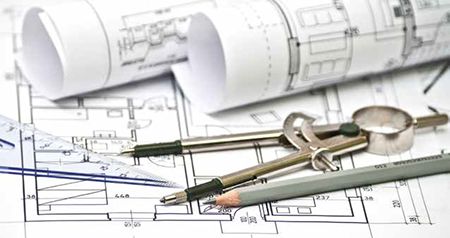Technology always develops from the primitive, via the complicated, to the simple.”
—Antoine de Saint-Exupéry
My favorite object is my Faber Castell E-motion mechanical pencil. It feels like someone made this pencil especially for me. Its metal-and-wood design is both high tech and down-to-earth. Most importantly, the lead is extra thick because I break conventional pencil leads in about five seconds. I sometimes wonder if the designer created this after seeing someone like me fail with a normal pencil. What I know is that I benefit greatly because someone in Germany expertly transformed the primitive pencil into a beautiful, complex machine, so I can keep drawing.
AV integrators perform this type of transformation every day. If we’re good at it, our routine high-tech formulas simplify lives. Some customers appear amazed when we show them how simple it is to accomplish amazing feats of complexity—but too frequently, some are still dumbfounded. This is because what is simple to one person is still too complicated for another. I believe that what “simple” really means in most cases is “personalized,” and in order to personalize technology, you need to peer into the user’s head, understand what they understand, and learn what is simple to them.
It might be helpful to actually see though another’s eyes, but sadly no one has found the magic passageway into the head of another, as John Cusack did in Being John Malkovich. Instead, we have empathy, which helps us to understand things from another person’s perspective. Empathy is probably one of the most touchy-feely words ever written in this publication, but it is an essential tool for any designer—especially a technology integrator. Our job is to transform the ridiculously complex into the simple; but because everyone’s “simple” is unique, we must create individually customized systems for our customers. Learning about them, experiencing what they experience, and trying to understand what they know are the first steps in a good design.

Unfortunately, those of us who are technology experts are often the worst at being empathetic. Many of us are so comfortable with tech that we are just confused as to why someone else just can’t “figure it out.” Being empathetic takes keen observational skills that must be continuously practiced. We can’t just ask people what they want. We need to learn what they need surreptitiously through observation and immersion into their world. One great example of this is described in Tim Brown’s book Change By Design, where he describes a study to improve emergency room experiences. While researching the topic, the designer checked in as a patient and secretly videotaped the experience to find out what actually happens to patients in the ER. One of his surprises upon viewing the videos was that a patient spends a majority of his or her time looking at the hospital ceiling. This led the designers to recommend “improving the overall approach to ER logistics, so patients were treated less like objects to be positioned and allocated, and more like people in stress and pain.”
Of course, customizing systems is much more difficult than providing a cookie-cutter design and expecting users to adjust. The advantages of developing and practicing your empathetic skills are that, in time, you will become more efficient at modifying your designs for your customers to create smoother experiences for them. An ideal system design reflects the user and what he or she is trying to accomplish. As these methods evolve, systems may be programmed to automatically and continuously transform to accommodate who we are and what we know. As products and systems get better and more complicated, we may all benefit from doing things our way.
Five Ways to Develop Your Designs with Empathy
1 Observe several typical client meetings/gatherings in their current space—especially how they begin. Most of the difficulty using technology in a meeting happens in the first 5–10 minutes, when a group is either successful or gives up and finds an alternative. Unfortunately, all tech failures are not the same and do not have the same outcome. Some may involve a young worker doing a special presentation for his or her boss. What are the ramifications of that failure?
2 Shadow your customers for a day. Watch their transitions from individual work to collaborative gatherings. What is the nature of their collaborations: are they democratic or hierarchical? How will this reflect the room layout? How frequently are they using media and what sorts of shared information do they need to support their collaboration and preparations for the their collaboration? What tools are they using and what technologies might support those tools? For example, are they developing mobile apps but have no way to share their mobile screens in the conference room?
3 Ask for their stories. Have them tell you about successes and failures using AV systems. What were the reasons for each? What is unique about their stories? How can an audiovisual system design support their success stories and avoid past failures?
4 Create prototype user experiences and observe them using the prototype. If a facility is being run by a touchscreen interface, create a minimally functional version (or even a paper prototype), describe its limitations, and observe them as they simulate accomplishing their goals. Record the session, if appropriate, and review the video later.
5 Every time someone makes an error using a system, note it as a design failure and reflect on how the design may have caused the error. Mistakes are most typically a mismatch between a person’s expectations and how a system actually works. Correcting these mismatches through design changes is the ultimate goal of an empathetic design practice. Despite your instinct to correct the user, these errors are moments when you can learn why the user perceived the situation differently from what you expected.
